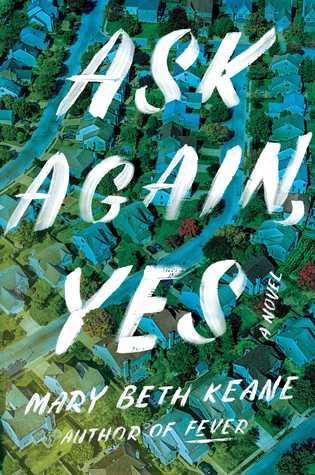Heading to warm climes for a winter vacation? Here are a couple of novels that won’t demand much strenuous thought in the reading—in other words, beach reads. For more reviews of beach reads, click here.
Summer of ’69 Elin Hilderbrand (2019)
When I pick up a book, the first thing I always do is read any sections called “Acknowledgments” and “Author’s Notes,” which are usually at the end of the main text. I take the risk of running into spoilers, but I can’t help myself. I want to know where the author was coming from when he or she sat down to write. I want to know who helped with the research, the drafts, the final editing. I look for names of people I remember from my brief stint in the 1990s as the director of a graduate MFA program.
In the Author’s Note at the back of Summer of ’69, Elin Hilderbrand explains that she was born on July 17, 1969, six minutes before her twin brother, Eric, entered the world. This alone is a surprising fact—multiple births were not as common in 1969 as they are today with advances in assisted reproduction and in neonatal intensive care. Fifty years on, Elin is a prolific writer of beach reads. In this one (her twenty-third), she revisits the momentous events of the summer that she herself was born, including in her fictional narrative such actual occurrences as the spellbinding Apollo 11 mission to the moon; the tragic death of Mary Jo Kopechne at Chappaquiddick that derailed Ted Kennedy’s presidential hopes; the fabled rock ‘n’ roll encampment at Woodstock; and the continuing slaughter of troops and civilians in Vietnam.
Her main characters are the Levin family, who summer on Nantucket, the small island off Cape Cod. Blair, the eldest of the offspring, is recently married and is diagnosed late in pregnancy as carrying twins. Kirby, the rebel sister, takes a job on the nearby island of Martha’s Vineyard, where she is almost a witness in the Kopechne/Kennedy case. Tiger, the only son, is off fighting in Vietnam, driving his mother to drink. And 13-year-old Jessie, the youngest, gets invited to Woodstock. Hilderbrand takes us back to 1969 in all its glory and horror through the experiences of this family. Some of the plot twists will be obvious to any avid reader of mystery novels, and a few anachronisms crop up. But, despite the backdrop of the Vietnam War, Summer of ’69 is mostly brisk and cheerful, with wrap-ups of most of the plot lines by the final pages. You can have that second margarita and still be able to follow the story.
The Islanders Meg Mitchell Moore (2019)
Even more lightweight than Summer of ’69 is this novel set on Block Island, off the coast of the state of Rhode Island. The main character is Anthony Puckett, a writer who produced one best-selling novel and then became enmired in a literary scandal.
Anthony is hiding out on Block Island for the summer when he meets Joy Sousa, owner of a whoopee pie café and single mom to a teenage daughter, and Lu Trusdale, former lawyer now reluctantly staying home with her two preschool boys. These three characters have considerable substance, which is not the case for some of the lesser characters, such as Lu’s husband, who have the personalities of cardboard cutouts. The interactions of Anthony, Joy, and Lu drive the plot of The Islanders, and that plot won’t challenge your brain in any meaningful way as you sip your beverage of choice at the cabana. Just lap up the scenes of surf and sand.
What I’d like to mention, with a spoiler alert, is the uncanny similarity between components of The Islanders and components of three other contemporary novels, two of which I’ve reviewed on this blog.
1. Beatriz Williams’s A Hundred Summers (2013): a hurricane in the denouement.
2. Ann Leary’s The Children (2017): a woman who writes a highly successful blog that has a major deception at its core.
3. Meg Wolitzer’s The Wife (2003): an acclaimed male writer who takes the credit for his wife’s writing, with her assent.
I’ll concede that the 1. could be coincidence, since hurricanes are pretty common on the East Coast these days. But 2. and 3.—really?





















